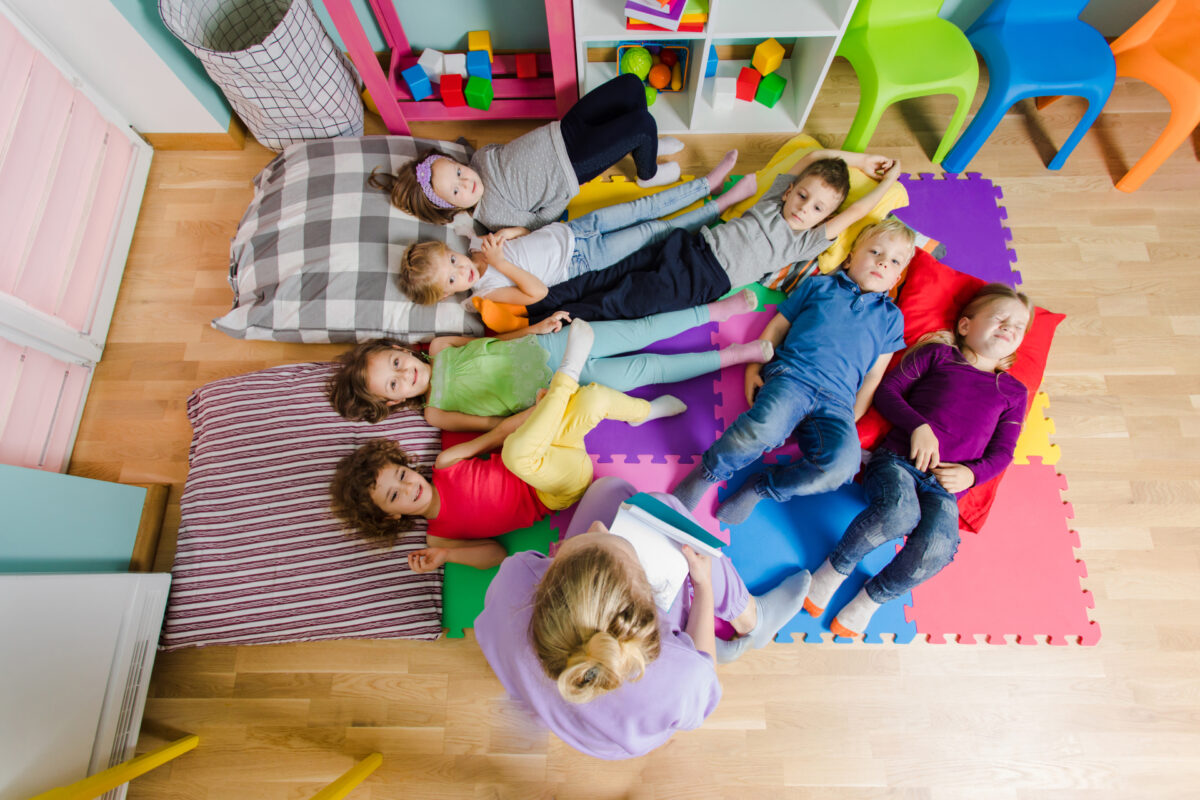Why do parents opt for non-public kindergarten?

Private or public kindergarten? It’s a question that often crosses the minds of parents facing the choice of a facility for their child. In this article, we’ll try to clarify the differences between private and public institutions based on the characteristics of our facilities and the observations of our teachers. We invite you to read on!
Let’s start with the size of the group!
In public nurseries, there are groups of up to 25 children (+3 children from Ukraine) per one teacher. Teachers work in rotating shifts, changing every 5 hours, which hinders cooperation among teachers and may adversely affect the comfort of the children. In private nurseries, special attention is paid to adjusting the number of teachers to the size of the group, which is significantly smaller than in public institutions. Two teachers and additional preschool assistants are assigned to one group. This arrangement allows for an individual approach, proper attention, and a stable and safe environment for the children. This is particularly important because one of the basic needs of children is to feel noticed and belonging to a group. Providing a child with attentive listening, empathy, and the opportunity to receive necessary strengthens their sense of self-esteem and competence. It enables the acquisition of interpersonal skills through observing and experiencing the responsiveness of teachers to their emotions and needs.
Teacher involvement is fundamental!
In private facilities, lead teachers have the autonomy to independently create lesson plans and the voluntary choice of techniques and teaching methods. We employ educators who have a passion and all the necessary resources for authoring activities tailored to the needs of children. In contrast to public institutions, there are no rigid frameworks and educational programs imposed, allowing for the adaptation of programs and their implementation to the current needs, mood of the children, and the overall group dynamics they form. Moreover, this work approach stimulates teachers to adopt a creative and original approach to their work, preventing burnout, falling into a routine, or losing motivation to work with children.
Being attentive to the needs of students is crucial!
Private facilities can employ a shadow teacher for children with special needs, supporting the child’s integration into the preschool environment. Private institutions also have an expanded staff, which means that teachers have significantly fewer responsibilities compared to public nurseries. This results in a greater focus on the needs of children and being constantly within their attention.
Rich Educational Resources
Preschool spaces for a long time have been associated mainly with toys and stuffed animals, often serving as dust and mite collectors. At our private facilities, we offer a range of sterile and visually appealing toys for children to enjoy. However, we go beyond that! With the help of additional financial resources, private facilities can now provide preschoolers with more than just toys. We equip them with multimedia boards, educational materials, games, robots, and much more to enhance their learning experience.
Rich Educational Program
As mentioned earlier, in private facilities, teachers have the freedom to plan and implement activities with children. The themes are continuously adjusted to what the children are currently experiencing or what constitutes an area of their interest. We don’t limit ourselves to standard book learning. We organize concerts, theatres, group games, exhibitions, workshops – a variety of different forms of spending leisure time. Starting with the assumption that there is more than one method for effective learning and enjoyable time spent in the facility. Private preschools also offer a wide range of additional activities that not only shape new skills in children but also teach the development and reinforcement of their sense of self-esteem during leisure time!
Interior Design of the Facility
Equally important is the interior! For example, at KIDS&Co., we ensure the use of neutral colours and an aesthetic appearance inside, which is rarely seen in state institutions. Children may become overwhelmed by a space filled with toys and bright colours, leading to difficulty concentrating and maintaining calm behaviour.
Choosing a Facility
When choosing a facility, it’s worthwhile to consider the aspects described above: the environment in which the child will spend their everyday life, the size of the group, who will be taking care of them and how, what they will be learning, the methods used, and most importantly, whether the chosen facility provides the child with opportunities to explore themselves, their talents, and resources!😊
Let’s meet!
We invite all of you to an individual meeting with the headteacher. This will be a great opportunity to find out about our educational offer, ask questions, and visit the kindergarten. You can book one visit for a given day.












